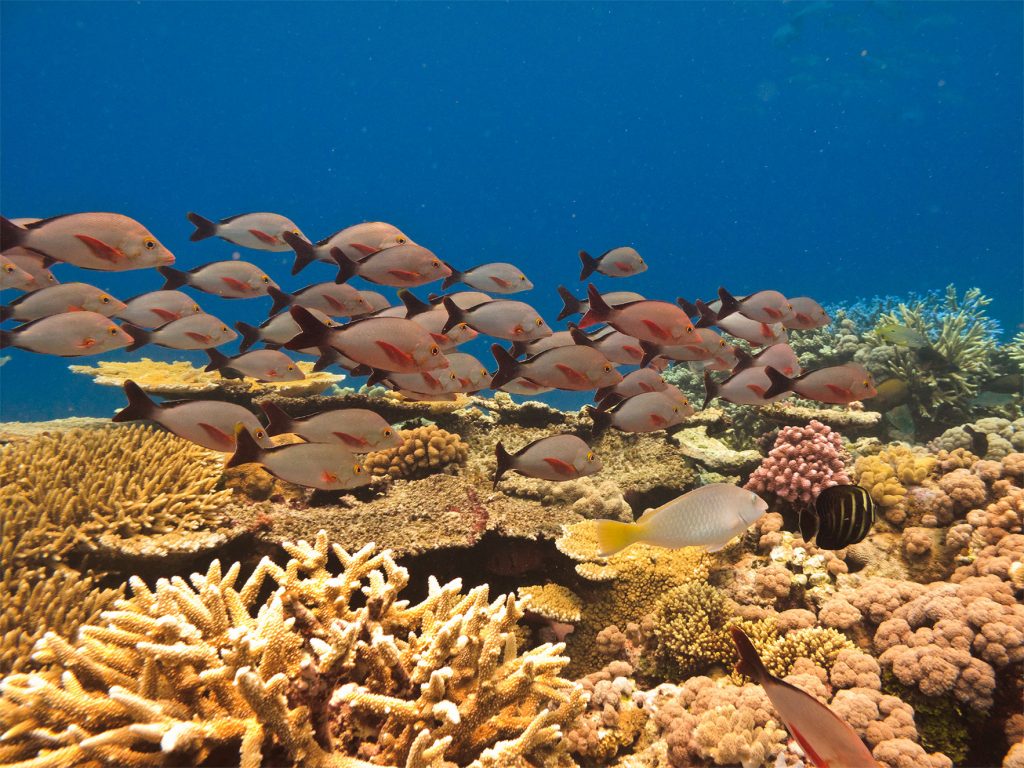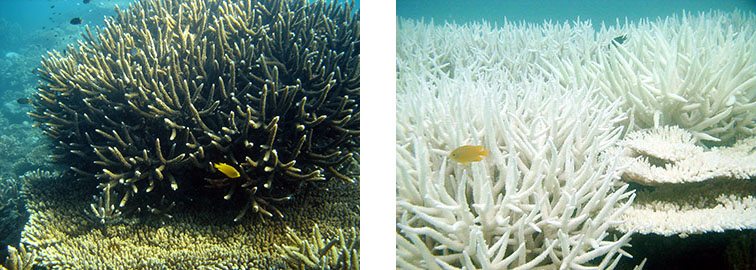Research Study
Is Safe Sea Safe for the Environment?
In 2008, there was a paper published in the Environmental Health Perspectives by Roberto Danovaro et al. which sparked a huge debate about the relationship between suncreen and coral bleaching.
As we know, Coral bleaching (i.e., the release of coral symbiotic zooxanthellae) has negative impacts on biodiversity and the functioning of reef ecosystems. As much as this effect is caused by pollution, temperature changes, bacterial diseases and many other factors, the study claims that ‘personal care products, including sunscreens, have an impact on aquatic organisms similar to that of other contaminants.’
This then gave rise to a multitude of questions. For example, are ALL sunscreens bad for coral reefs? What exactly is it about sunscreens that lead to the bleaching of corals? What about dilution?
The Danovaro study claims that up to 6,000 tons of sunscreen is released yearly in tourist areas and petroleum based sunscreens are not biodegradable. When certain chemicals come into contact with corals, the coral becomes stressed and pushes out algae living inside it hence, leaving behind a vulnerable skeletal structure. This algae gives the coral its distinctive colour. Because the coral reefs lose their biological inhabitants along with their pigments, they become “bleached”.
So what does this mean for Safe Sea users? In the study, the researchers listed 4 sunscreen chemicals that caused coral bleaching. They are: butylparaben (a preservative), oxybenzone (a sunscreen), octinoxate (a sunscreen) and 4-methylbenzylidene camphor (a sunscreen) – with Oxybenzone and Octinoxate being the most common found in most commercial sunscreens.
Oxybenzone is a UV filtering chemical compound and while it does a good job blocking UV rays, it alters coral DNA and acts as an endocrine disruptor making it more susceptible to bleaching.
Octinoxate is another UV filtering agent and while studies have not shown that Octinoxate has the same level of toxicity as Oxybenzone, the study still shows that Octinoxate “caused complete bleaching [of coral] even at very low concentrations.” Octinoxate is a common ingredient in sunscreens as it is inexpensive and keeps the cost of sunscreen low.
Safe Sea sunscreen contains none of the above mentioned chemicals and is biodegradable and non-toxic for the marine environment (including fish and coral). Safe Sea also does not harm the jellyfish you might encounter. It merely prevents it from stinging you.
Safe sea is the only water in silicone sunscreen. The silicone shield of Safe sea holds the sunscreen filters on skin much stronger than sunscreen which are water or gel based. Thus, this keeps the sunscreen on skin and prevents extensive dilution in the water.
For everyone who’s concerned about sunscreen damage to corals, fret not for Safe Sea is reef safe!

